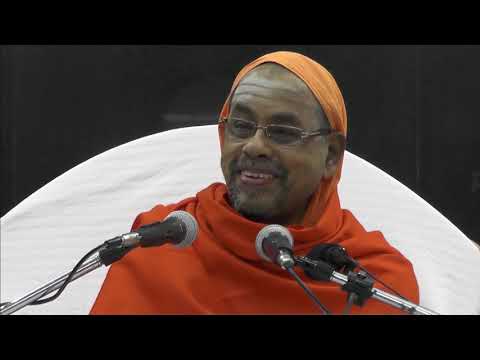Ashtanga Yoga
3 minute read
I confess I love reading the small booklets that are produced by various ashrams. The quick and easy accessibility can make a novice reader  interested in the deeper subjects of Vedanta. “Ashtanga Yoga”, a 58-page booklet produced by Arsha Vidya Sevashram Trust, is one such book. Based on the lectures of Swami Paramarthananda, this is easy on the eyes and a fun read. Swamiji Paramarthananda should need no introduction, and his lectures are among the most sought after, for good reasons. My personal reason for enjoying listening to him is his method of infusing modern examples to old concepts, with a lot of humour thrown in that the audience finds highly relatable.
interested in the deeper subjects of Vedanta. “Ashtanga Yoga”, a 58-page booklet produced by Arsha Vidya Sevashram Trust, is one such book. Based on the lectures of Swami Paramarthananda, this is easy on the eyes and a fun read. Swamiji Paramarthananda should need no introduction, and his lectures are among the most sought after, for good reasons. My personal reason for enjoying listening to him is his method of infusing modern examples to old concepts, with a lot of humour thrown in that the audience finds highly relatable.
This is not a book review but a quick summary of the 8 limbs of yoga, for the novice reader. So let us start with each of the 8 limbs, in order.
Yama. Here we are reminded than an unrefined mind cannot know the atma, and we must start with the regulation of our gross personality (the body) before we come to its subtle (the mind). Thus we are told of the five-fold avoidance, or panca vidha varjanam. Avoidance of violence, avoidance of untruth, avoidance of any illegal illegitimate transactions (e.g. stealing), avoidance of inappropriate relationships, and avoidance of hoarding and accumulation of possessions beyond one’s needs. All these 5 avoidances are known as yama.
Niyama. The committed pursuit of 5 areas. Orderliness, or a place for everything. Santosha, or contentment with what one earns through one’s efforts. Voluntary austerity or tapas. Scriptural study or Svadhayaya. Pranidhanam or surrender, to God, the cosmic consciousness. All of these pursuits together are Niyama.
Asana. The right postures to prepare for the meditative mind. Regularity is important and meditation should become habit.
Pranayama. Breathing and health are interconnected. Once the mind is steady, the practice of meditation can be carried out.
Pratyahara. Composed of two parts, the 5 sense organs of knowledge (eyes, ears, nose, tongue and skin), and the 5 of action (speech, hands, legs, organs of procreation and evacuation). Prati Ahara is the withdrawal of these ten sense organs from their respective fields of operation.
Dharana. Focusing or fixing. The withdrawal of the mind from the world, which has to be pulled away from all other objects. This is the start of meditation.
Dhyana. The progress stage of meditation. We are reminded that Dhyanam without God is merely a mental exercise. Generally one is to choose the nama of the istadevata to whom one has a natural appeal. The quality of meditation is important, with 15 minutes being adequate.
Samadhi. Absorption. When dhyanam becomes effortless, then one’s will gets absorbed in that, and it is called Samadhi.
 These 8 limbs, Ashtanga Yoga, can be designed to suit the needs of all spiritual seekers. Even if a person is not a spiritual seeker, this yoga can help in refining the mind which ultimately will improve the quality of life. The smooth slow of this booklet will make it an enjoyable start for any learner and seeker.
These 8 limbs, Ashtanga Yoga, can be designed to suit the needs of all spiritual seekers. Even if a person is not a spiritual seeker, this yoga can help in refining the mind which ultimately will improve the quality of life. The smooth slow of this booklet will make it an enjoyable start for any learner and seeker.
Ashtanga Yoga. An Exposition by H. H. Swami Paramarthananda
Books available at Arsha Vidya Sevashram Trust, and at the various lectures.

